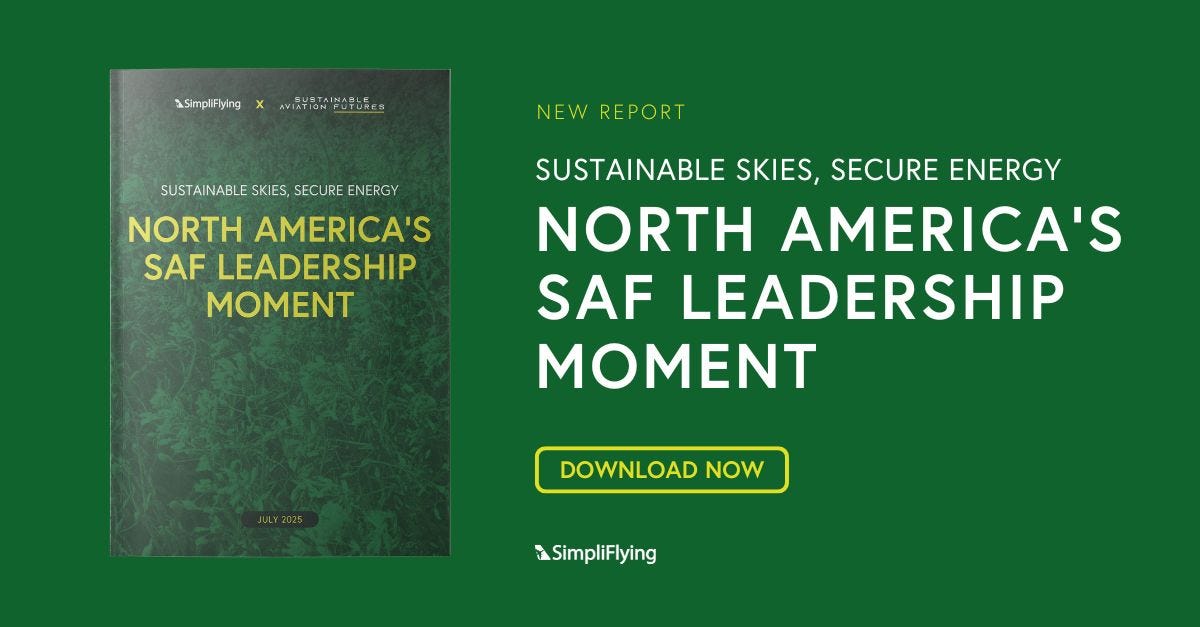New Report: North America's SAF Leadership Moment
A closer look at the policies, players, and geopolitical tailwinds accelerating sustainable aviation fuel—and why the next 24 months will be decisive.
This October, Houston will become the epicentre of sustainable aviation’s next chapter. The Sustainable Aviation Futures North America Congress 2025—taking place from 14 to 16 October—will bring together the entire value chain, from agricultural producers growing feedstocks to airline executives securing billions of gallons, and from procurement officers to climate investors.
Ahead of the event, we’ve released a new report highlighting the players, trends, and strategic advantages driving North America’s SAF surge—and why timing now matters more than ever. The growth has been sharp, the coalition behind it unusually broad, and the implications global.
In early 2024, the United States had just two sustainable aviation fuel (SAF) production facilities—World Energy in California and Montana Renewables in Montana—producing around 2,000 barrels per day.
By July 2025, capacity had surged more than fifteenfold to over 30,000 barrels per day. Projects like Montana Renewables’ $1.67 billion expansion are reshaping the fuel supply landscape. Shell Aviation is positioning itself as a global SAF production leader.
At its core, this is the convergence of energy policy, agricultural economics, and national security priorities. Environmental advocates are pushing for cleaner skies. The military is planning for fuel resilience. Airlines face growing pressure from investors. Farmers are looking to diversify revenue streams. And rural communities are opening up to high-quality jobs and long-term investment. Together, these forces are unlocking the next chapter of SAF deployment.
Key insights from the report
Explosive growth trajectory
North American SAF production capacity has increased fifteenfold from 2,000 to over 30,000 barrels per day in just one year.Continental advantage
The U.S. brings agricultural scale, capital markets, and industrial capacity. Canada contributes aerospace leadership and supportive policy. Mexico adds untapped feedstock potential—all linked through integrated trade and supply chains.Military-driven innovation
With energy resilience a growing concern, defence applications are accelerating SAF deployment. The $79 billion climate-tech defence market is emerging as a proving ground for technologies that aviation also needs.Revolutionary cost reduction potential
New discoveries of naturally occurring “white” hydrogen offer a path to dramatically lower production costs—potentially as low as $0.50/kg, compared to $6/kg for green hydrogen. This could unlock large-scale e-fuel production for aviation.Beyond carbon benefits
SAF reduces contrail ice crystal formation by 50–70%, helping to address aviation’s non-CO₂ climate impact—estimated to account for 20–30% of its total warming effect.
Why this matters
The policy landscape is moving. The Big Beautiful Bill has preserved the critical 45Z tax credits through 2029, providing long-term certainty for producers. State-level programs like California’s Low Carbon Fuel Standard layer on additional incentives. Airlines are signing decade-long offtake agreements, ensuring stable revenue for new facilities.
North America holds unique advantages in this global race: the feedstock base, the refining infrastructure, the capital, and—perhaps most importantly—a growing alignment across sectors and borders.
But the window is limited. Europe has binding SAF mandates in place. Asia is investing heavily in new feedstocks and production pathways. The regions that move fastest will define market standards and capture the greatest share of future demand.
Download the full report to explore where SAF is heading and how North America can lead the next phase of aviation’s energy transition.





